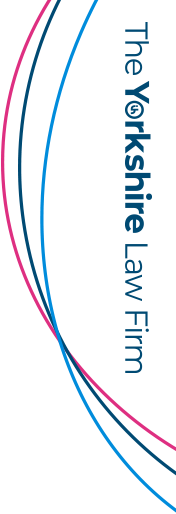In 2017, James Thompson was approached by Mr A who was unhappy with his current solicitors and wished to transfer his claim. Mr A was aged 19 at the time which meant that: a) the time he had left to either settle his claim or issue court proceedings, (eve of his 21st birthday) was fast running out; and b) the care of concern was in 1997 which was a period of transition as to what the expected standards of care were in respect of the management of shoulder dystocia and this would make it a tricky case, as care has to be judged against the standards of the time.
Whilst expert evidence is always obtained to consider the standard of care given, Ison Harrison have an extensive historic library of Obstetric and Midwifery books upon which to rely should there be arguments as to what knowledge was and wasn’t in the public domain at the time. Ison Harrison are also fortunate in that the experience and knowledge of Erb’s Palsy related claims of the department’s solicitors covers the last 3 decades.
Having obtained Mr A’s file of papers from his previous firm we were shocked to discover that they had failed to obtain a full set of medical records or commission expert evidence and yet they had proceeded to send a Letter of Claim to the Defendant setting out allegations of negligence which purported to have been based on expert evidence.
The Defendant was invited to disregard the Letter of Claim sent by the previous firm and permit us to investigate and present the claim properly.
In summary, Mrs J was pregnant with her second child, the pregnancy was uneventful, although it was indicated that she was having a large baby. At 37+2 weeks she reported reduced fetal movements and induction of labour was booked for 39 weeks.
At 39 weeks Mrs J was admitted to Hospital for induction of labour. She progressed to full dilation and shortly after that she began pushing. There was little progress being made despite pushing well and therefore preparations were made for a Ventouse delivery. Mrs J’s baby boy was born by Ventouse delivery weighing 9lb 7oz. The delivery was difficult because the baby’s, (Mr A) shoulders got stuck and there was significant bruising to the right arm.
The evidence provided by Mr and Mrs J as to what they could reliably recall during the traumatic delivery of their son was critical. Despite the many years which had passed their recollection of events was vivid and they made very good witnesses.
Initial shoulder and clavicle x-rays identified no fractures but a further x-ray on 6 November 1997 demonstrated an undisplaced proximal fracture of the right radius. Baby A was referred to an Orthopaedic Surgeon which confirmed a greenstick type fracture of the proximal radius as well as a brachial plexus injury. There was no spontaneous recovery in the movement and function of the right upper limb and the prognosis was poor.
At almost 7 months old Baby A underwent surgery during which a neuroma was excised and he had nerves taken from the back of his legs and grafted into his shoulder. Over the years that followed Mrs J carried out daily physiotherapy on her son with a programme of stretching and other exercises for the right upper limb. She did this in the hope that it would reduce the damage in his arm and enable him to live as independently as possible. Mrs J continued with regular physiotherapy until he was old enough to do it without assistance and it remains an important part of his life.
Mr A was the victim of bullying as a child as his Erb’s Palsy made him an easy target. Despite the best efforts made by his parents to engage his school so as to stop the interference in his schooling he had to move schools. Unfortunately, the bullying continued and affected his GCSEs and further education.
The family received support from the Erb’s Palsy Group Charity and encouraged Mr A to be as independent as possible, however he continues to have problems with his right upper limb including restricted movement and limited strength. These issues cause difficulties in doing activities such as changing a light bulb, decorating, reaching objects above shoulder height, opening tins, fastening buttons. The injury has left him with a cosmetic deformity of the shoulder and he finds it difficult to buy clothing that fits well.
With the benefit of expert evidence, in August 2017 Ison Harrison Solicitors put forward a new Letter of Claim to the Defendant Trust criticizing the care provided in 1997 by having failed to perform McRoberts following recognition of Shoulder Dystocia and by having applied excessive traction to Baby A’s head. In support of our arguments and in anticipation of a fight as to what standard of care was to be expected in 1997 we were able to refer to around 50 publications and studies in support.
Predictably, the Defendant denied all allegations in their Letter of Response in February 2018. Following investigation of quantum court proceedings were commenced in early September 2018. The Defendant served their Defence in late January 2019.
Following careful analysis of the Defence (Part 35) questions were put to the Defendant so as to elicit a clarification of the Defence which would highlight to the Defendant the weaknesses in their own arguments. At the second attempt the Defendant conceded and Judgement was entered for Mr A in May 2019 along with a payment on account of damages in the sum of £50,000.00.
The Defendant would not agree as to the nature and extent of the expert evidence that was required so as to enable a Judge at trial to determine the amount (quantum) of the award Mr A was entitled to and the parties proceeded to a contested hearing in June 2019. The Judge agreed with James Thompson and permission was granted by the Court for the parties to obtain quantum expert evidence from experts in the following fields: Orthopaedics, Psychiatric, Educational Psychology; Physiotherapy and Occupational Therapy.
A trial as to quantum was set down for 6 days from 8 February 2021.
Following the exchange of quantum expert evidence and meetings of experts of like discipline, the parties met in January 2021 to see if an out of court settlement could be reached without proceeding to trial. A settlement was reached in the sum of £731,155.65.
With the benefit of his payment on account of damages and final settlement Mr A has been able to put in place the care package, aids, equipment and technology that he requires. He has since bought his first home and is doing well. He is in a good place and he can be confident that as he starts his own family he will be able to put in place the additional measures which he will require and not let his Erb’s hold him back.
Entering Judgement for Mr A and settlement of his claim also brought his parents peace. They no longer have to worry about their son in terms of his future financial wellbeing, but it also gave them answers to their questions about what happened all those years ago, whose fault it was and whether things could and should have been different.
It was clear to James Thompson that Mr A’s mother had carried a feeling of guilt throughout her life that she was in some way to blame for what happened to her baby. Whilst it is never the fault of a Mother if her child suffers an Erb’s Palsy, to have this message reinforced by independent experts, by an admission from the Defendant and then by settlement of her son’s case meant that she could finally let go of those feelings. Winning the case for Mr A was a great result, but being able to help his Mother to finally let go of the millstone around her neck meant just as much, if not more to James.
For help and advice regarding Erb’s Palsy, please contact our expert clinical negligence team.




